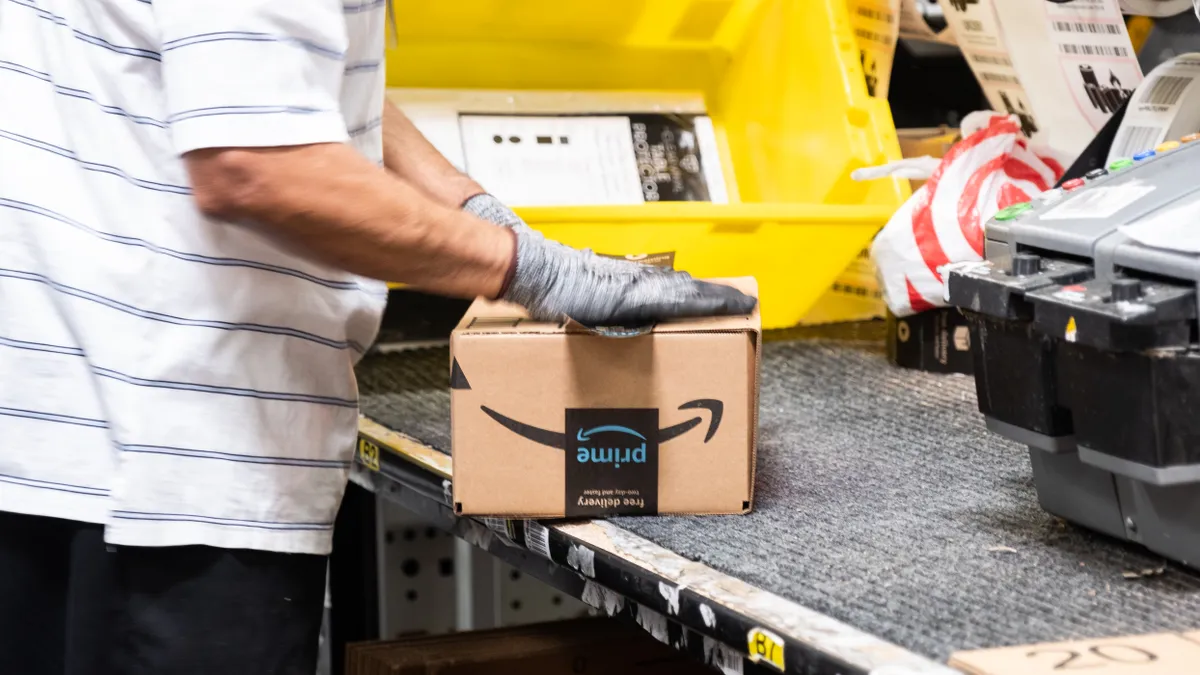Amazon's business model is built on speed and efficiency. To highlight the company's speed, sister publication Supply Chain Dive used data shared by Rakuten Intelligence. Rakuten uses a panel of e-commerce shoppers to track shipments from Amazon, Walmart, Target and others.
Rakuten tracks shipments through two stages: click-to-ship, and ship-to-door. 'Click' here refers to a customer making an online order, 'ship' is when the package starts moving toward a customer and 'door' is when it finally arrives at the final location. Click-to-door gives you the time for the entire process.

Amazon is competing against retailers with storefronts. The numbers show Amazon's total shipping time has averaged under three days for most of 2019 while non-Amazon retailers tracked by Rakuten were closer for five days for the entire year.

This speed starts in the fulfillment centers. Amazon has been able to get its click-to-ship time down below one day for all of 2019, while non-Amazon retailers have hovered closer to two days. Amazon invests heavily in its fulfillment operations, using robotics for process automation and network expansion to get inventory closer to consumers.
Amazon has faced criticism for how it runs its fulfillment centers — operating at a breakneck pace and placing efficiency above all else. These are claims Amazon denies, but they have been independently reported on again and again and again.

Amazon's focus on speed outside the fulfillment center can also be seen in investments; from airplanes to cargo vans. These investments, along with positioning inventory closer to the end customers, have helped Amazon whittle down its ship-to-door time below two days for the latter part of 2019. Non-Amazon retailers are closer to three days.
This is similar to the strategy used by other retailers. Target has been using its brick and mortar locations to get inventory closer to consumers and has credited the move with cost reduction.

The pay-off from last-mile investments can be seen in the change over time in the percentage of Amazon packages delivered by third-party carriers.
In 2019, Amazon overtook the U.S. Postal Service as the carrier delivering the plurality of its packages. These are numbers FedEx shared in its first-quarter earnings in an attempt to quell fears over the logistics company's decision to end its Express and Ground contracts with Amazon.
Rakuten's numbers show neither Target nor Walmart use their own transportation resources to deliver packages to the final mile.
Taken together, these numbers highlight how Amazon is trying to differentiate itself through its supply chain. For more details read Supply Chain Dive's story regarding a look into Amazon's logistics.












